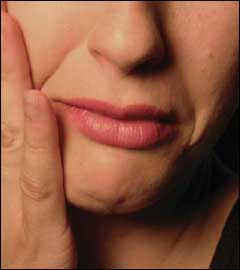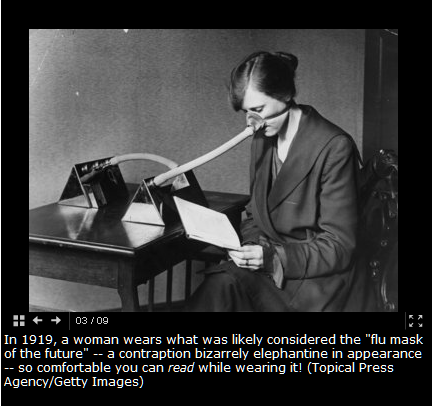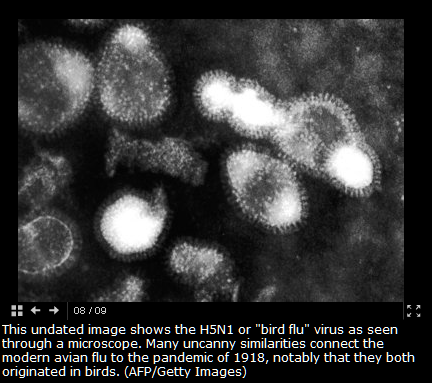Beware of 'Medical Acupuncture', says industry whistleblower
 Tuesday, May 5, 2009 at 10:01AM
Tuesday, May 5, 2009 at 10:01AM Those of us who have spent four years and thousands of hours of internship in an accredited school to learn to practice traditional Chinese medicine and have been Nationally Board Certified by the NCCAOM (NCCAOM.org) have long been worried about the existence of so-called 'Medical Acupuncturists'.
This official sounding moniker suggests something superior to a Licensed Acupuncturist (or as licensed in some states, though the education is the same, 'DOM' - Doctor of Oriental Medicine). However what this title actually delivers is a medical doctor previously untrained in acupuncture, who has taken a 100-200 hour course, much of which is learned in the students own home. While someone who has an MD is clearly very well educated in Western Medicine, this qualifies them to practice acupuncture about as well as if I, or any other acupuncturist were to practice surgery with 200 hours of training.
The press release below describes this situation in more depth. When making the decision to embark on an acupuncture treatment plan, make sure that your practioner has completed a four year program, earning a Masters degree in Oriental Medicine and that they have been Nationally Board Certified by the NCCAOM (NCCAOM.org)
copied from: http://www.webwire.com/ViewPressRel.asp?aId=93407
Beware ‘Medical Acupuncturists’, Warns MedicalAcupunctureFacts.com
WEBWIRE – Friday, April 24, 2009
Health industry whistleblower MedicalAcupunctureFacts.com (www.medicalacupuncturefacts.com) has issued a public warning to patients of so-called ‘medical acupuncturists’, as opposed to licensed acupuncture practitioners , suggesting that the lower training threshold and lack of specialization can be detrimental to both the acupuncture experience and the health of patients undergoing treatment.
(24 April 2009) - - Health industry whistleblower MedicalAcupunctureFacts.com (www.medicalacupuncturefacts.com) has today issued a stark warning to patients of so-called ‘medical acupuncturists’, urging them instead to opt for treatment under fully licensed acupuncture practitioners.
Unlike the 4-year L.Ac qualification, which requires over 3,000 hours of intense study and research, ‘medical’ acupuncturists are ‘certified’ after only 220 hours of study, some of which is undertaken at home without the benefit of the tutoring of experienced acupuncturists. Indeed, in some US states, medical acupuncturists require as little as 100 hours of training before practicing acupuncture.
Zhu Dan Xi, a spokesperson for MedicalAcupunctureFacts.com said the value of the L.Ac qualification should not be underestimated, and patients should be aware of the potential dangers of receiving treatment from an unlicensed practitioner.
“We hear horror stories on a daily basis from patients undergoing treatment from medical acupuncturists, which just further underpins our belief that 100-200 hours of training simply isn’t enough. In the same way you wouldn’t trust a so-called doctor with 100 hours training, we believe you shouldn’t trust so-called medical acupuncturists either. These practices create a negative perception of acupuncture, and destroy the confidence of patients in what is truly a remarkable healing practice.”
“As a result of the lack of training of ‘medical’ acupuncturists, we’ve seen a rise in recent years in the levels of bad feeling towards acupuncture, with frequent claims of painful and uncomfortable treatments which have little healing effect. As any L.Ac licensed practitioner will testify, this couldn’t be further from the truth with well-executed acupuncture treatments, which can have a dramatic impact on health and wellbeing.”
The World Health Organisation suggests 100-200 hours of study should serve as qualification for research into acupuncture alone, recommending a minimum further 1,500 hours of study prior to practicing as an acupuncturist. The L.Ac qualification, in contrast to the home-study route, offers 3,000 hours of structured study over the course of a number of years, the equivalent of a Masters degree, to produce knowledgeable safe and professional acupuncture practitioners.
- And this article comes from an MD who did one of the video course which are some doctors and chiropractors do in order to practice acupuncture. This physician quickly saw the limitations of this short course and did what very few doctors will do: went to Oriental Medical School. Fascinating read.
Abbreviated Courses In Acupuncture For Physicians Pose A Serious Problem
Sometimes, understanding one’s background can clarify their particular point of view. So in the spirit of “full disclosure” I would like to tell you a little about mine.
I began my medical career in 1979 when I received my MD degree from Albany Medical College. I trained in diagnostic radiology at George Washington University Hospital in Washington, DC. I entered private practice and spent 20 years doing full-service hospital radiology. It was at the end of these 20 years that changes occurred in my life, changes that made me look at my direction and commitments. It was at that time in my career when I discovered acupuncture, and the power this medicine has to heal. Please understand, I was awestruck at the conditions acupuncture could effectively treat —- conditions that from my previous medical training I knew were precisely those no one wanted to get stuck with because there was no effective treatment. I am a fellowship-trained interventional radiologist, and I have put needles into arteries, veins, solid organs, abscesses, tumors, pleural cavities, peritoneal cavities….you name it. But I had never felt the pull of Qi on a needle, I had never intentionally manipulated a needle to achieve a specific energetic effect, I had never contacted the energy of a meridian, nor used needles themselves, as instruments of healing. Here was a whole new science to learn. And the amazing thing is that it has a 3000 year history with millions upon millions of people undergoing clinical trial in China for 30 centuries!

So I enrolled in a course for physicians to learn “medical acupuncture”. I attended two weekend sessions, watched videotapes, and read one book. This course was based on the work of one physician. The book we read was his book – the videotapes we listened to were him talking, and he gave nearly all of the lectures at the 2 weekends of instruction. On the last day of training, I happened to be sitting next to a doctor from San Diego, and I overheard him say, “My wife knows so much more about acupuncture than I do.”
I subsequently found out this doctor’s wife was a licensed acupuncturist. One thing led to another, and before I knew it, I was enrolled at the National College of Natural Medicine in Portland, Oregon in a Master’s degree program in Classical Chinese Medicine. I will graduate from this same program in June. It is a 4-year program, and I have been able to complete it in 3 years by transferring credits from my medical school training. I feel very strongly that, in order to practice acupuncture at the level of competency which this medicine deserves, one must learn from many professors, observe with many clinical supervisors, and spend at least a few years to learn how to approach a patient in a holistic way with an entirely new set of diagnostic principles.
Remember, I am a scientist at heart, and this is the finest science that I have encountered. As a physician who has gone through Western medical training and now training in acupuncture and Oriental Medicine, I assure you that abbreviated courses in acupuncture for physicians pose a serious problem. That problem has to do with efficacy of treatment. Without a comprehensive education in the fundamentals of this science, and without appropriate hours spent in learning complex needling techniques, followed by supervised clinical application of all of this learning, it is not possible to effectively treat the list of diseases which the world now recognizes are amenable to acupuncture intervention.
The World Health Organization recognizes the ability of acupuncture to treat the following diseases: asthma, menstrual cramps, arthritis, sciatica, TMJ problems, allergies, anxiety, depression, bladder problems, kidney problems, childhood illness, colds, influenza, cough, bronchitis, constipation, diarrhea, dizziness, ear-nose & throat disorders, fatigue, gynecological disorders, genital herpes, herpetic neuralgia, heart palpitations, immune system deficiency, infertility, insomnia, numbness, poor circulation, PMS, sexual dysfunction, impotence, skin problems, stress-related illnesses, and weight gain or weight loss…and the list goes on.
Acupuncture is not a nice, short topic that can be covered during a seminar lasting for a few weekends. Suffice it to say, that it is not possible to treat the difficult diseases listed above after watching videotapes, reading one textbook, and attending two weekends of lecture with needling practice on a few other course participants.
I would like to give you a brief case presentation now, to try to illustrate in a nutshell why I am writing this letter. A 57 year old man presented 4 days earlier to the OHSU emergency room with sudden and complete blindness in his right eye. He was seen by an ophthalmologist, underwent carotid ultrasound, an MRI of his brain and MRI angiography , and was told that he had occlusion of his central retinal artery and would have permanent loss of vision in that eye. At the time of presentation his medications included lisinopril, metformin, and aspirin. Fortunately, the patient happened to have an appointment with his chiropractor, who heard the story of this man’s sudden blindness and grim prognosis, and referred the patient to the acupuncture practitioner who worked in the same building. The patient was seen daily for 7 consecutive days for acupuncture treatment. On the second day, he could see a small circle of light in the center of his vision in the blind eye. Day by day that circle of light enlarged, and became clearer. At the end of 7 treatments he had 20/40 vision in the previously blind eye.
This is the power of this medicine in the hands of a skilled practitioner. This is what can be accomplished in Oriental Medicine. Someone in Integrative Medicine has given me a definition of their subspecialty as the medicine that “fills in the gaps”. I think this is an apt definition, and there are many gaps in western medicine which need filling. Please give Oriental Medicine a chance by ensuring that practitioners who enter this field are adequately trained. Let’s up the ante, and see whether we can embrace this amazing alternative healing science with practitioners who have enough didactic hours of lecture from a variety of acupuncture faculty, and enough supervised hours of clinical practice so that they are familiar with treating patients with all sorts of maladies such as cancer, asthma, palpitations, constipation, allergies, menstrual disorders….to name just a few common problems.
The way forward has been paved by the state of Hawaii. Hawaii requires that medical doctors be trained and tested for competency prior to administering acupuncture to patients. The Attorney General for the state of Hawaii issued a statement on August 18, 2003, declaring that “medical acupuncture” as performed by physicians is not substantially different from any other type of acupuncture, and therefore, physicians performing “medical acupuncture” should be subject to the same laws of licensure and proof of competency as everyone else.
We in the acupuncture field are at a crossroads. We can condone physicians doing acupuncture under-trained, unsupervised, unevaluated in terms of competency, or we can strive to raise the standard. I feel strongly that this is a public health issue. I feel strongly that allowing medical doctors with minimal training & without oversight by a non-professional organization is a dangerous and foolhardy policy. I’d like to respectfully remind you that we are talking here about a healthcare profession; we are talking about peoples’ health & well-being; we cannot afford to have a double standard. The general public deserves parity in licensing so that competency can be maintained.
I therefore propose that the American Association of Medical Acupuncture evaluate their own training programs and consider complying with the World Health Organization’s recommendations of 1500 hours of training in acupuncture for physicians interested in pursuing this medicine. The WHO standards for physicians performing “medical acupuncture” include 1000 hours of didactic (including needling technique labs) and 500 hours of supervised clinical training, which ensures adequate training for entry level acupuncture. In addition, I feel that physicians should be required to pass the NCCAOM examinations to ensure their competency in acupuncture evaluation and treatment. If the AAMA is willing to adopt these standards of 1500 hours and NCCAOM testing, I believe the future of “medical acupuncture” in the United States would be shifted from a position of tenuous efficacy to one of competency and powerful healing.
Dr. Marilyn M. Walkey MD
 License,
License,  Medical Acupuncture,
Medical Acupuncture,  Medical Doctor,
Medical Doctor,  certification,
certification,  licensure in
licensure in  Disorders
Disorders 

